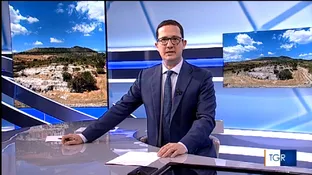Prehistoric Sardinia
Italian UNESCO Candidacy 2025
The Domus de Janas and other prehistoric monuments towards recognition
A Millennial Heritage on the Path to World Recognition
Among rocks sculpted by time, Sardinia holds one of the most extraordinary archaeological heritages of the Mediterranean. The Domus de Janas, ancient tombs carved into the rock between the Middle Neolithic and the Copper Age (5th-3rd millennium BC), tell stories of rites, myths, and millennial communities.
Today, these monuments are at the heart of the Italian candidacy for the UNESCO World Heritage List 2025, a recognition that celebrates Sardinia as a crossroads of ancient civilizations and a guardian of universal heritage.
Through this portal, explore the 26 candidate archaeological monuments, discover their stories, and follow the path towards UNESCO recognition. Because preserving the past means empowering the future.
First official presentation of the project
October 26, 2018CeSim/APS presents the project idea for the first time at the international conference 'Le domus de janas decorate: patrimonio dell'Umanità', held in Nuoro.
Start of candidacy
March 21, 2021The request for the inscription of the serial site in the UNESCO Tentative List is submitted.
Acceptance of inscription in the Italian tentative list
April 8, 2021The request for the inscription of the serial site in the Italian tentative list is accepted.
Submission of the Nomination Dossier to UNESCO and Start of the Evaluation Process
January 15, 2024Submission to UNESCO of a detailed Nomination Dossier required for the evaluation of the serial site's inscription on the World Heritage List.
Only Italian candidacy for 2025
January 25, 2024The Board of Directors of the Italian National Commission for UNESCO has designated the serial site as the only Italian candidacy for the UNESCO World Heritage List for 2025.
ICOMOS inspector visit
August 20-30, 2024An ICOMOS inspector, appointed by UNESCO, visited the serial site while ICOMOS continued its review of all the documentation provided.
Final outcome of the candidacy
July 2025By this date, the response from UNESCO regarding the candidacy for the inscription of the serial site in the World Heritage List is expected.
Prehistoric Sardinia: A Unique World Heritage
Sardinia is a unique island in the world, where every stone tells an ancient story of over 6,000 years. Dolmens and menhirs stand as silent sentinels, the domus de janas reveal ancestral rites and beliefs, while the imposing megalithic structures testify to the architectural genius of the first civilizations. There is no other place in the Mediterranean with such a concentration of prehistoric monuments, so varied and so well preserved. Here, history is not just a memory of the past: it is a living heritage, waiting to be discovered.
Sardinian Prehistory: A Journey through History and Mystery
Imagine a time when Sardinia was populated by communities that carved stone to guard their secrets. The Domus de Janas, menhirs, and dolmens tell stories of rituals, life, and death, carved in stone and suspended in time.
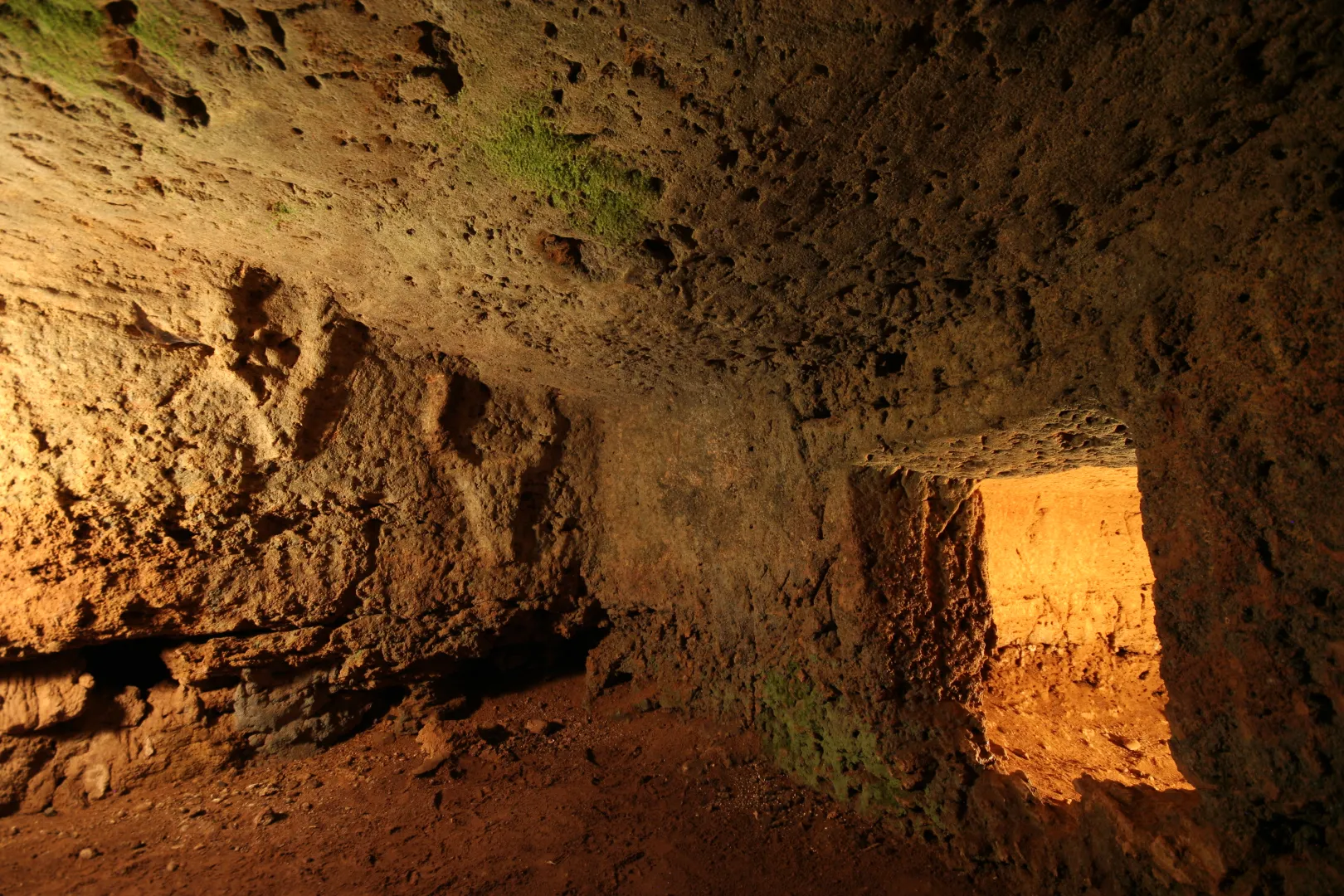
Domus de Janas
Carved into the rock with millennial patience, the Domus de Janas - literally 'fairy houses' - were burial places and gateways to the afterlife. These hypogeic tombs, often adorned with ritual symbols, hold the secrets of ancient pre-Nuragic communities, who attributed a strong spiritual value to death, reflected in their rites and sacred decorations.
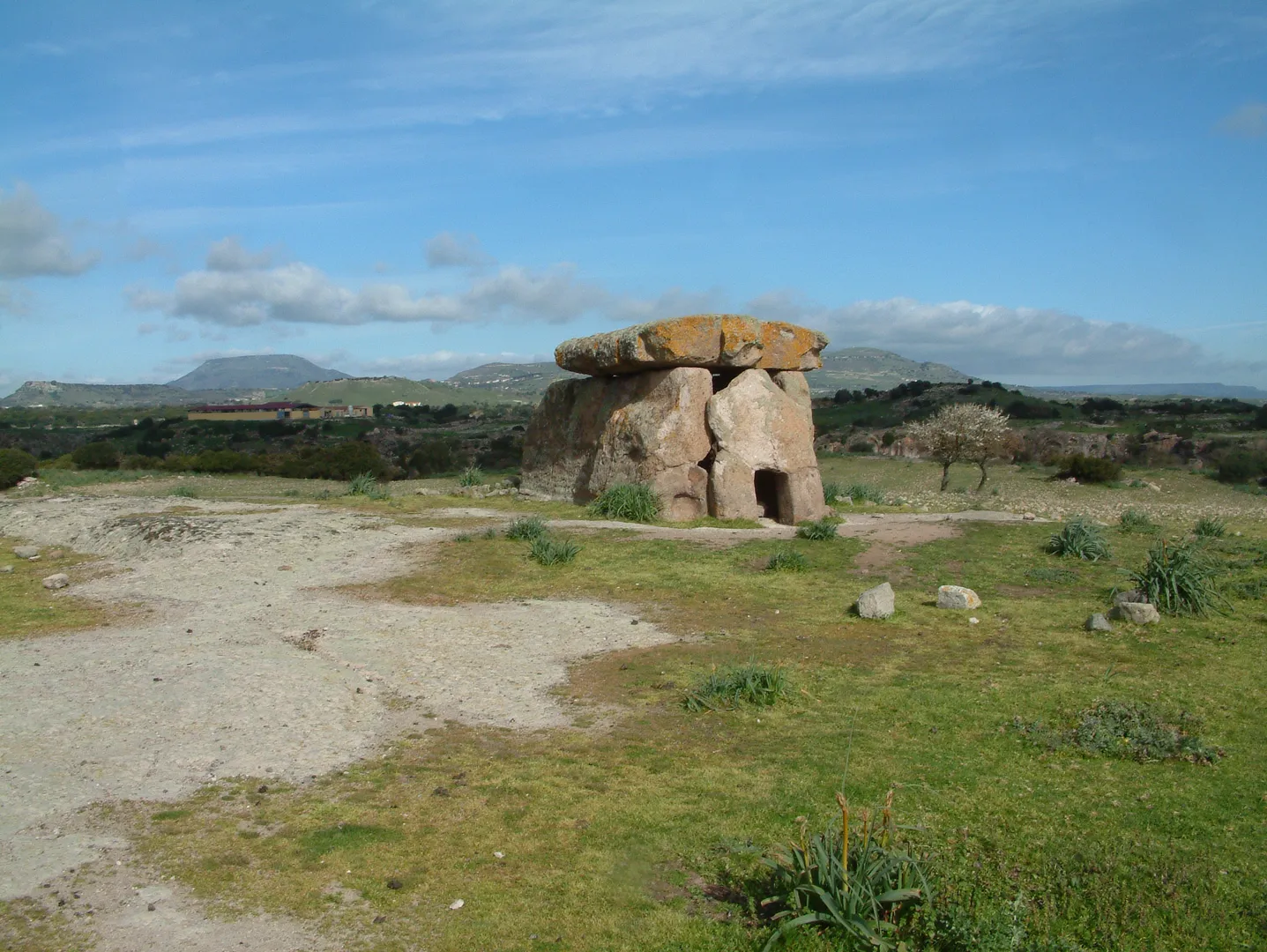
Dolmen
A megalithic monument built with the trilithon principle, the dolmen has marked the landscape for millennia. Constructed between the Neolithic and the Eneolithic (4th-3rd millennium BC), it had a funerary function and also served as a territorial marker. Even today, these imposing stone structures emerge from the landscape as ancient witnesses of rites and ancestral memories.
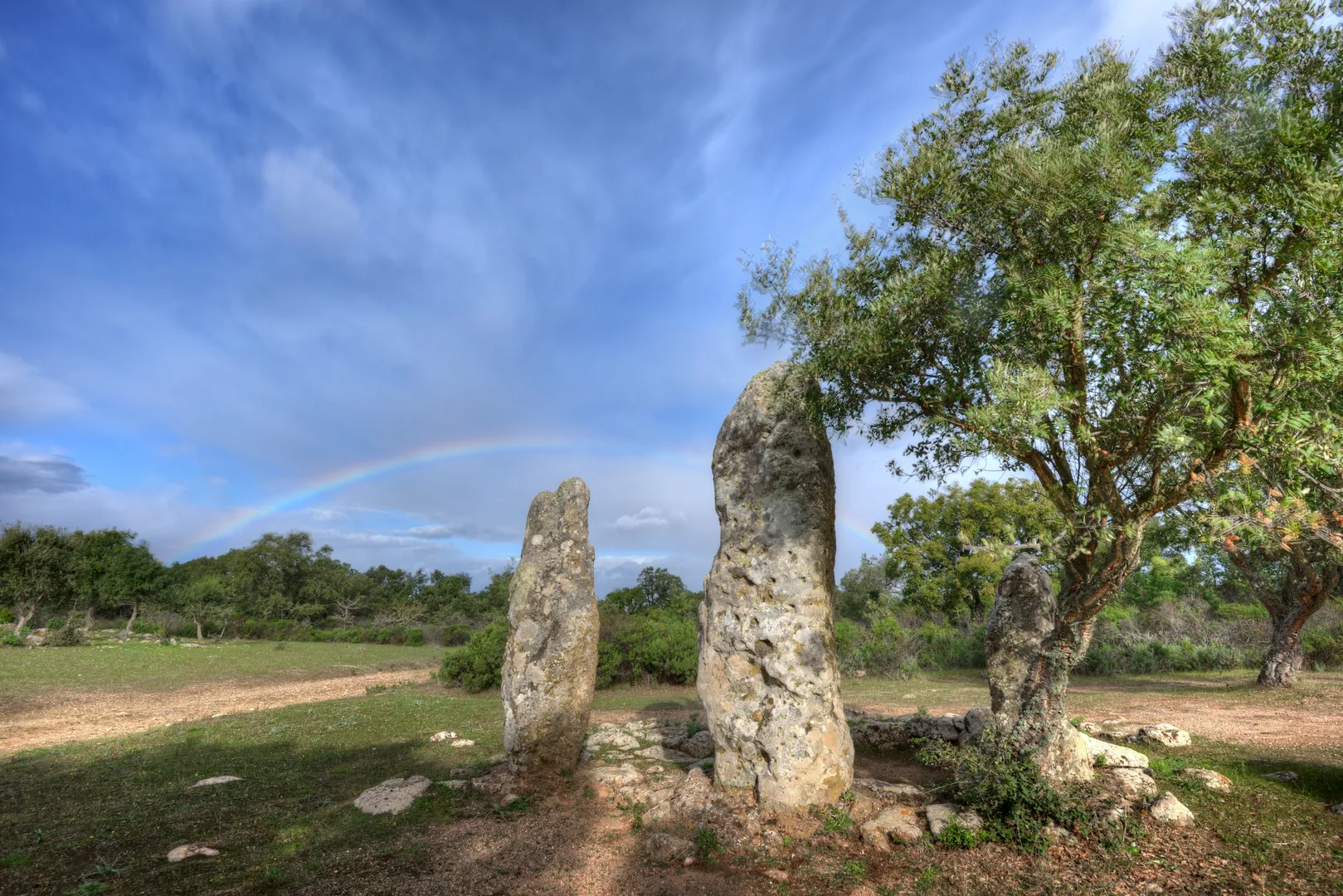
Menhir
Solitary stone sentinels, the menhirs have stood embedded in the ground for millennia. Often isolated or arranged in alignments, they were linked to the religious cults of Neolithic populations (5th-3rd millennium BC), perhaps as sacred symbols, reference points, or places of ritual celebration. Even today, these enigmatic monuments tell of a past where spirituality was carved in stone.
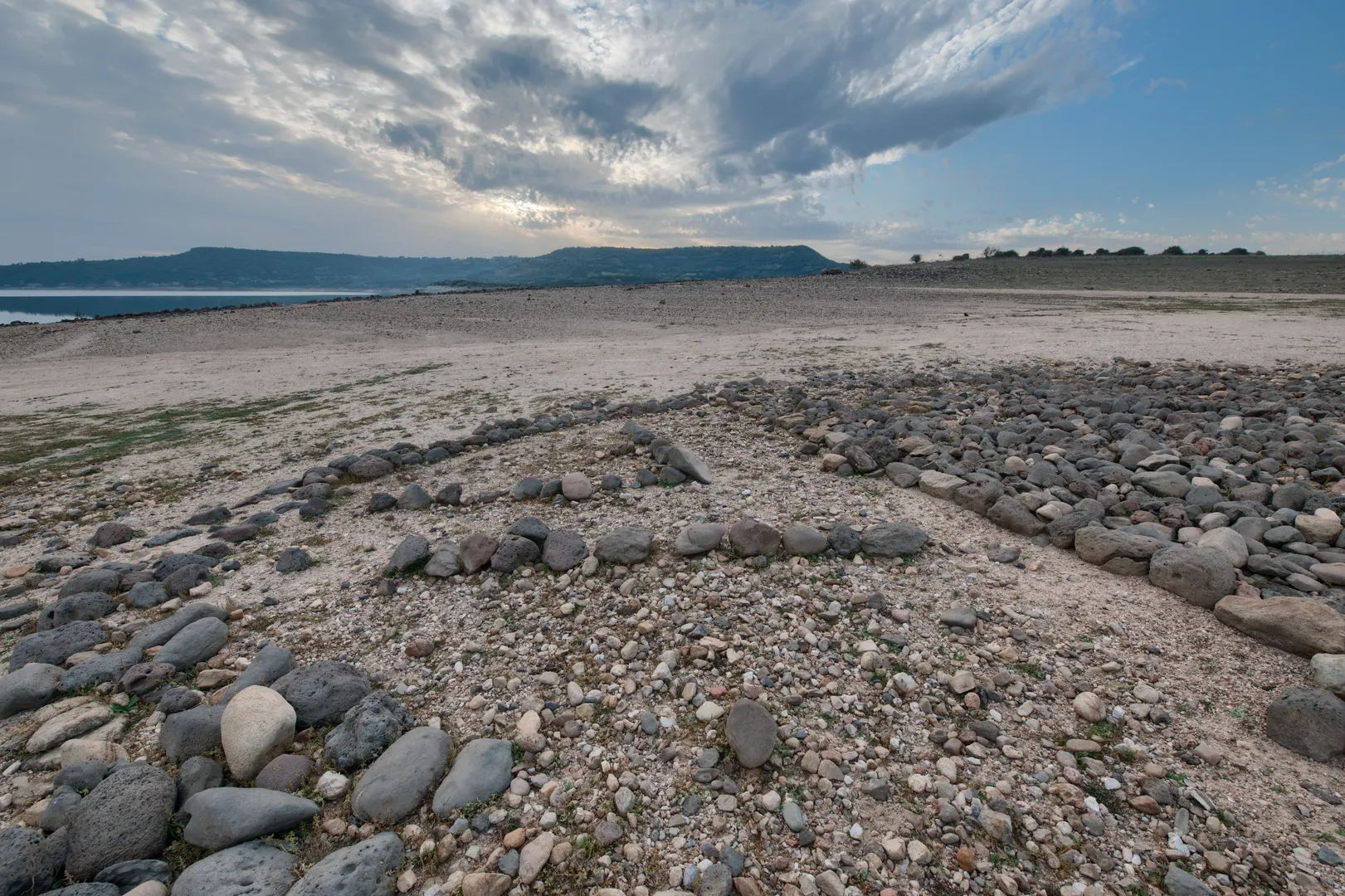
Prehistoric Villages
Among dusty paths and natural terraces rose the prehistoric villages: residential nuclei made of circular huts, enclosures, and common areas, places of daily life and social relations. Here, food, hunting techniques, and collective rites were shared, in a constant balance with the surrounding nature.
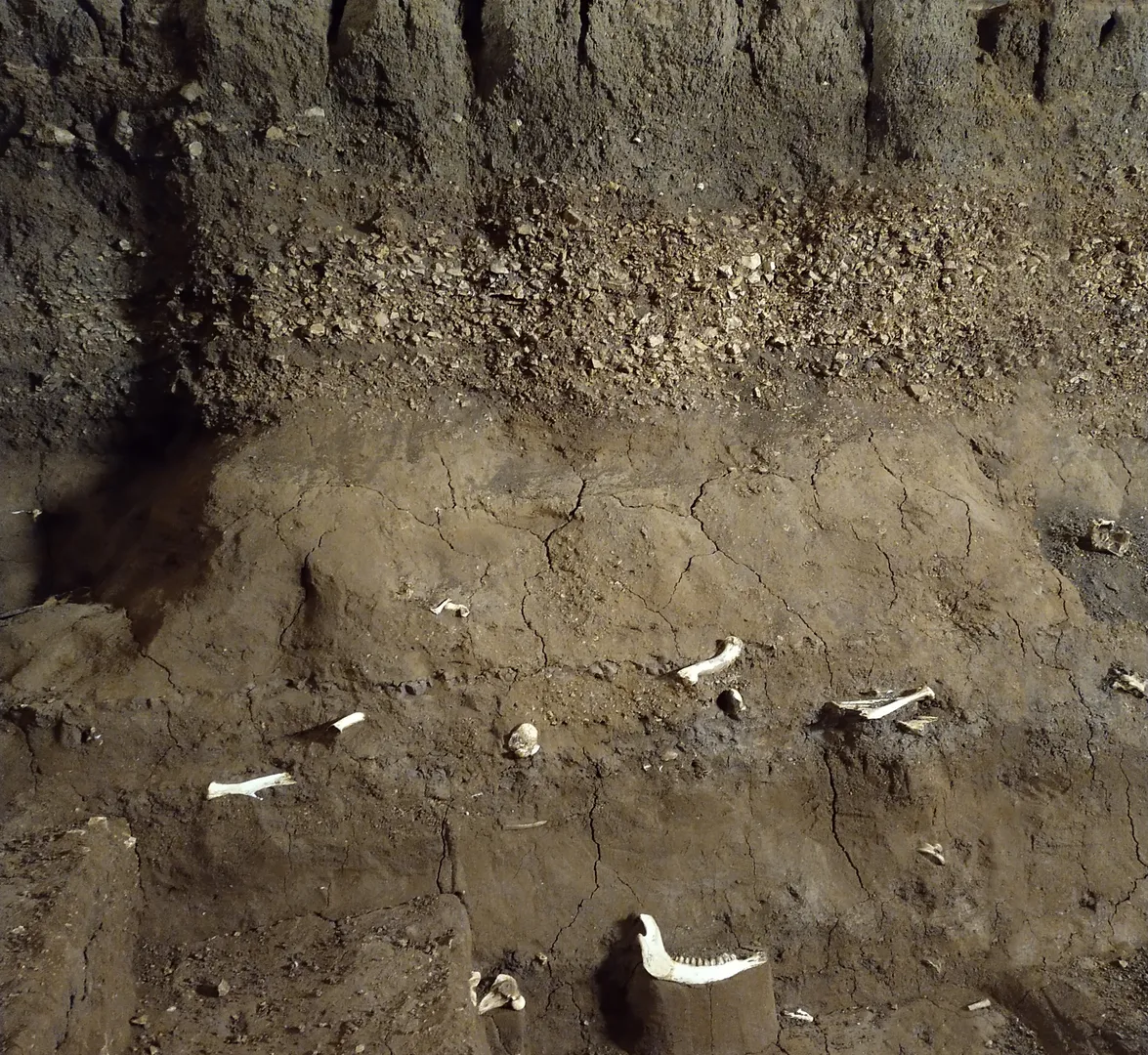
Prehistoric Caves
More than just shelters, prehistoric caves were natural sanctuaries and houses of memory. Inhabited, decorated, or used as tombs, these cavities tell the story of men who sought shelter but also connection with the heart of the earth, in a continuous dialogue between man and nature.
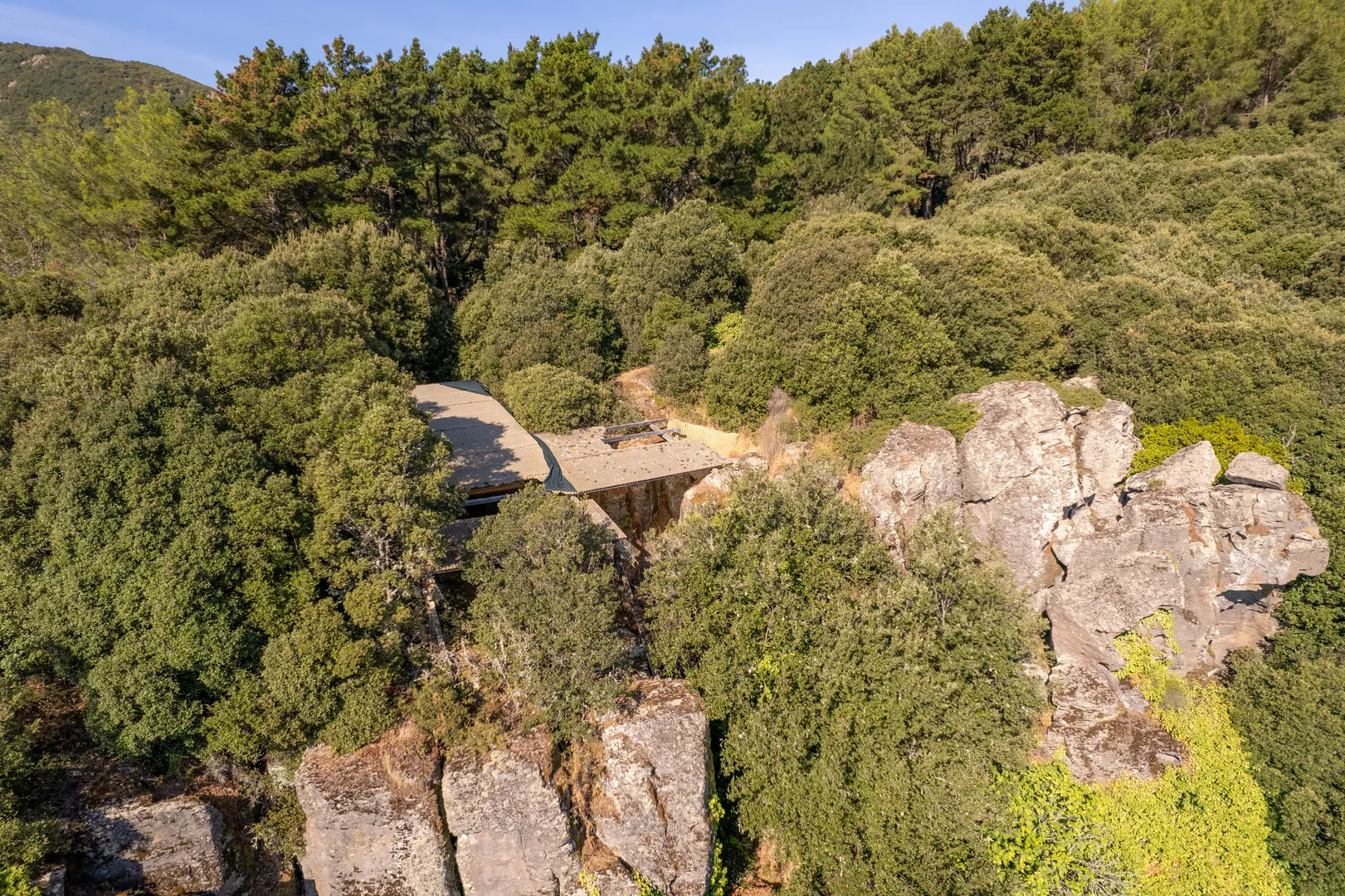
Rock Shelters
Balancing between refuge and sanctuary, rock shelters were places of daily life and spaces of protection. But not only: they often also became places of worship or burial, preserving on their walls traces of paintings and engravings that still today narrate the stories of those who inhabited them.

Prehistoric Altars
Sacred spaces carved into the earth or shaped with stone blocks, prehistoric altars were the beating heart of community rites. Places of worship and offering, often built on natural reliefs or in monumental stepped forms, they served as symbolic bridges between earth and sky. Here, propitiatory rites, sacrifices, and ceremonies related to the cycles of nature were celebrated, reflecting a society deeply connected with the environment that surrounded it.

Prehistoric Walls
Lifting colossal stone blocks and arranging them into imposing structures required ingenuity, strength, and collective spirit. Prehistoric walls were not just physical barriers: they marked boundaries, defended villages, and guarded sacred places. Today, they remain as silent monuments of a past where survival was a daily challenge and community was the key to resilience.
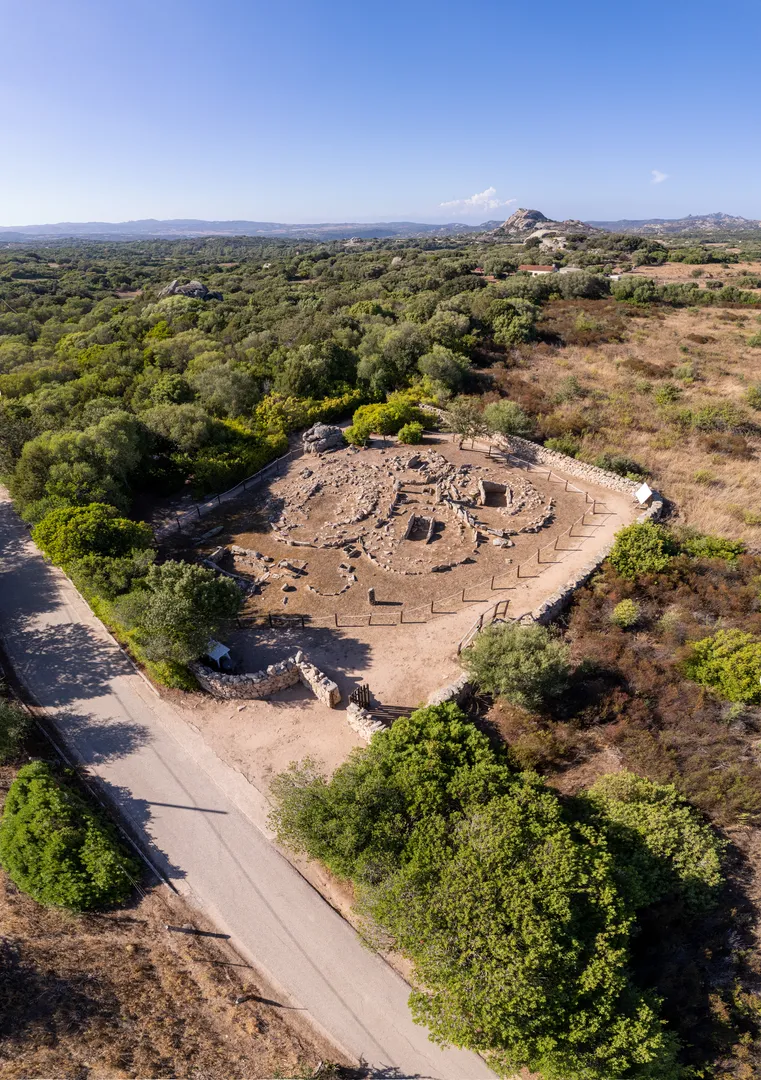
Megalithic Circles
Rings of stone, silent guardians of ancient rituals. Megalithic circles, built with enormous stones arranged in concentric circles, were sacred spaces linked to funerary cults and the connection with cosmic forces. Walking beside them today is like following the traces of ancient rites and vanished communities.
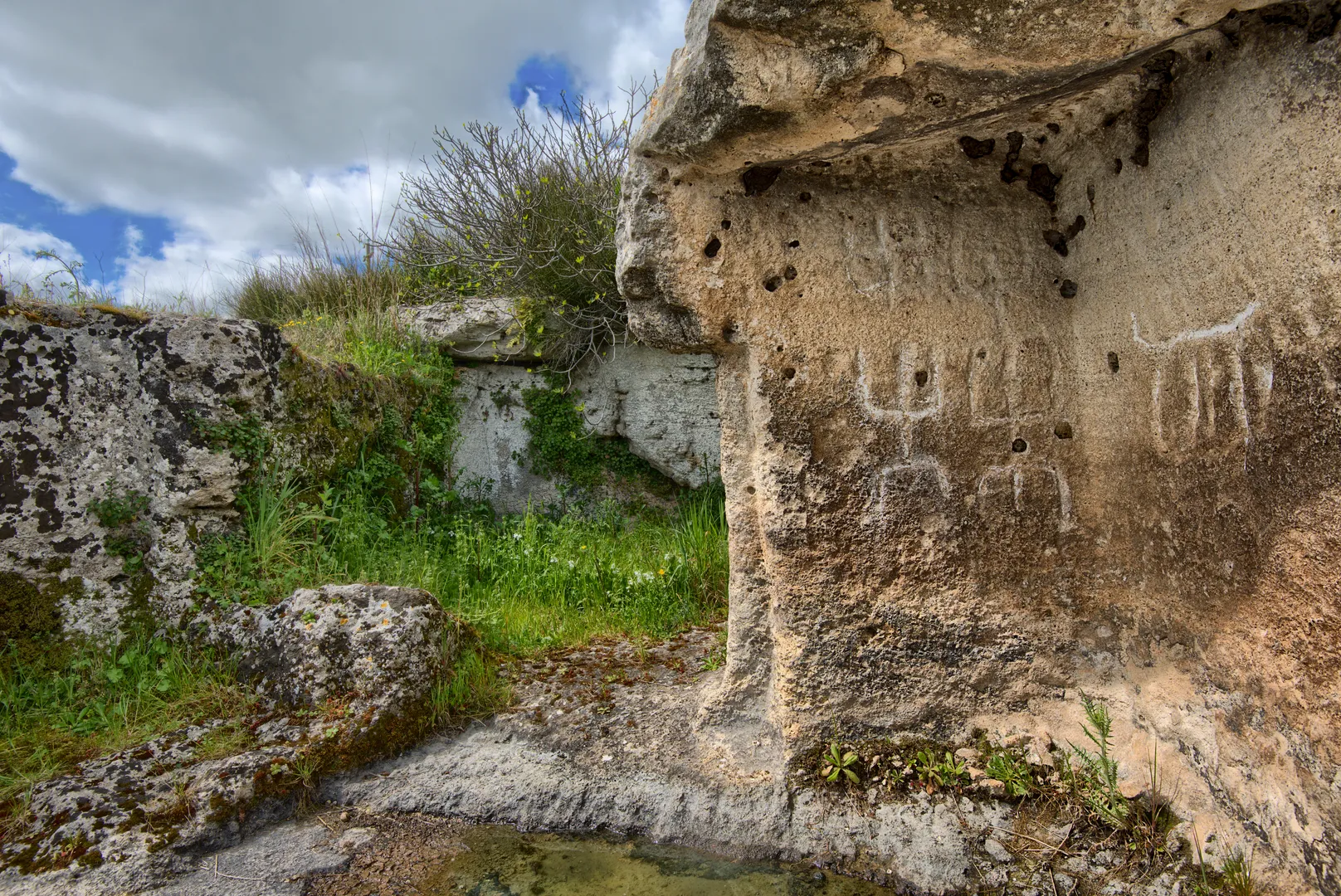
Sculptures, Paintings, Rock Engravings
On the walls of domus de janas, caves, and rock shelters, prehistoric humans carved, sculpted, and painted figures that still defy the passage of time. These artistic motifs are fragments of collective memory—maps of beliefs and stories shaped through slow, ritual gestures, meant to outlast those who created them.
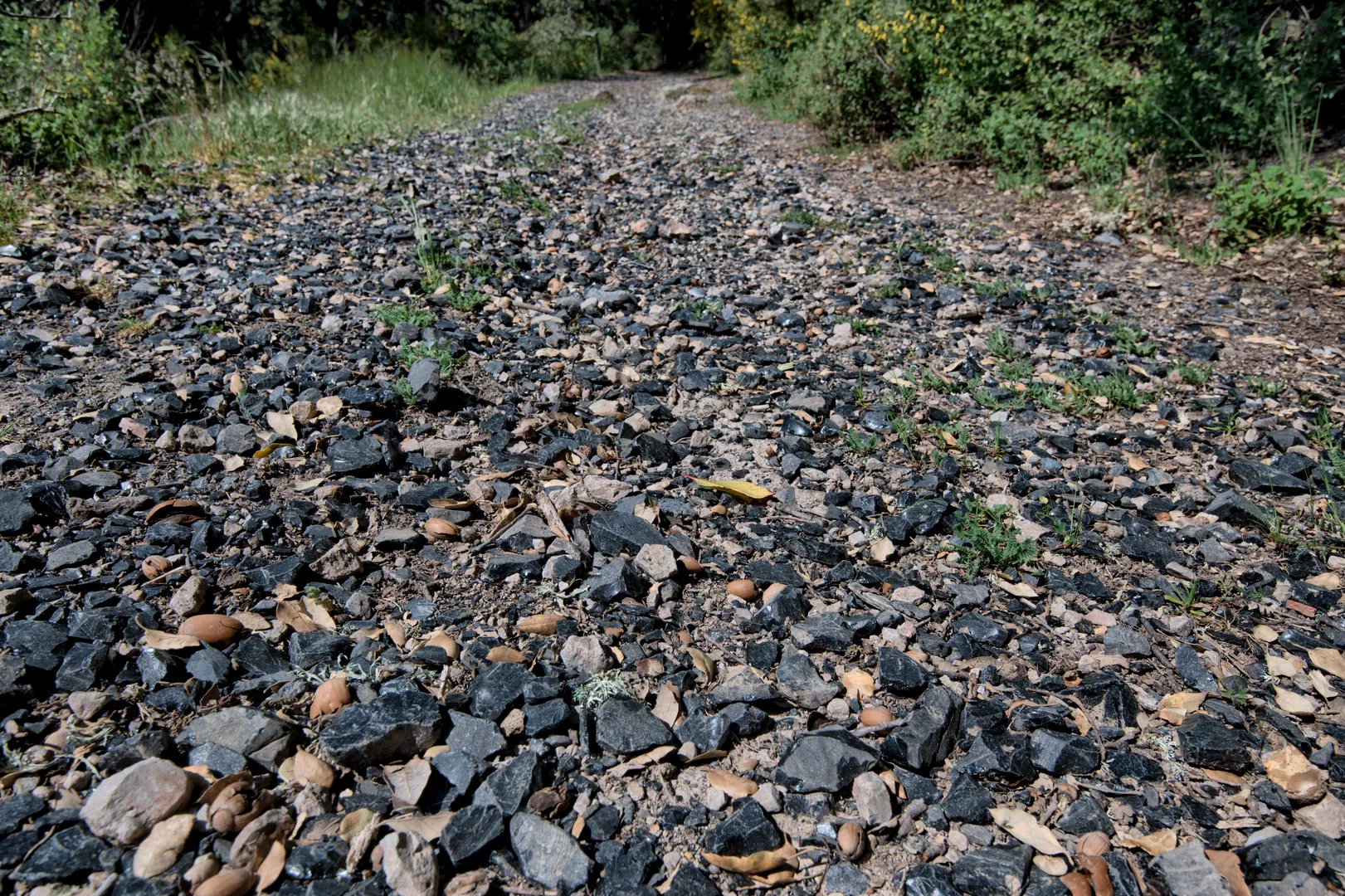
Lithic Workshops
Where the sound of stone breaking echoed through the valleys, lithic workshops arose: true prehistoric laboratories. Here, skilled craftsmen shaped obsidian and flint to create weapons, tools, and ornaments, giving form to the instruments that would shape the destiny of communities.
Heritage Monuments
Among hills, valleys, and rocks sculpted by time, Sardinia preserves places where myth and history intertwine. Twenty-six archaeological monuments tell the story of the ancient island communities and are now candidates for the UNESCO World Heritage List 2025.
Each monument is a window into a distant past, an invitation to discover the deepest roots of the island.

Necropolis of Anghelu Ruju
The largest pre-Nuragic necropolis in Sardinia, with 38 tombs carved into the rock. Symbol of the deep bond between Neolithic communities and the cult of the dead.
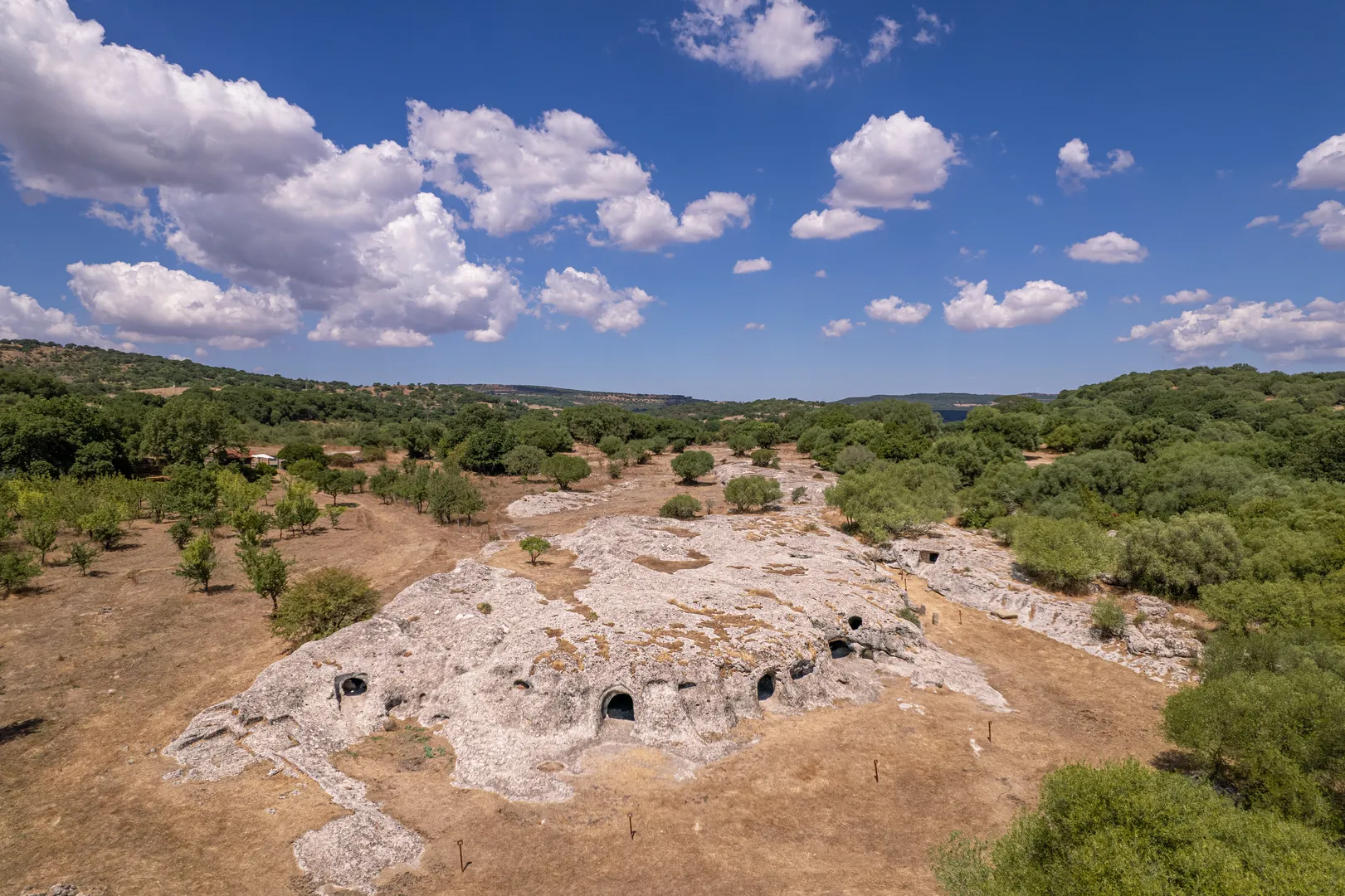
Necropolis of Puttu Codinu
Nine hypogeic tombs nestled among the hills of Monte Minerva. Testimony of the collective rituals of Neolithic communities.
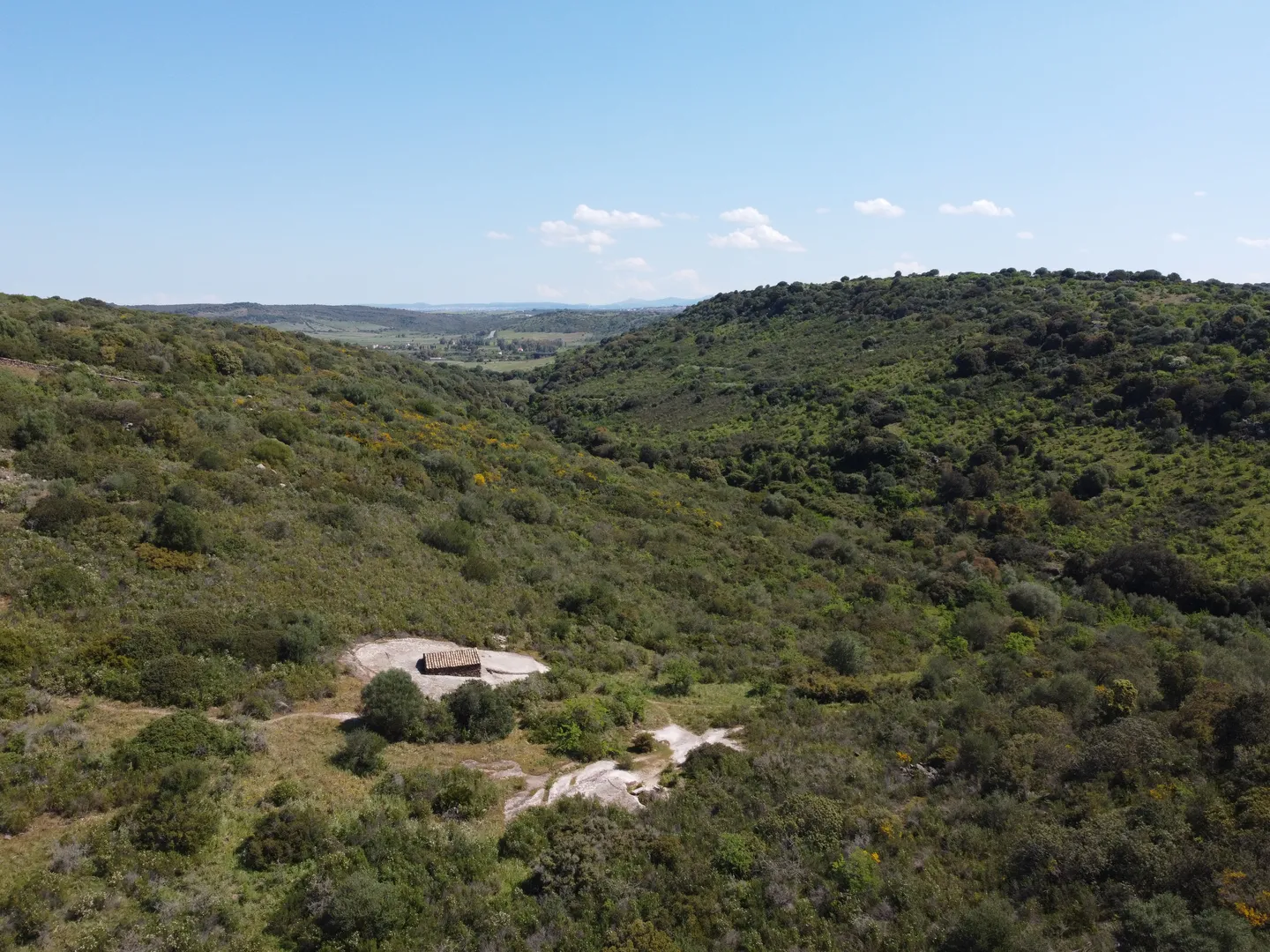
Necropolis of Monte Siseri or S'Incantu
Domus de janas famous for their refined interior decorations, symbols of a deep cult of the dead.

Fortified Complex of Monte Baranta
One of the oldest fortifications in Sardinia, with powerful prehistoric walls from the Copper Age.
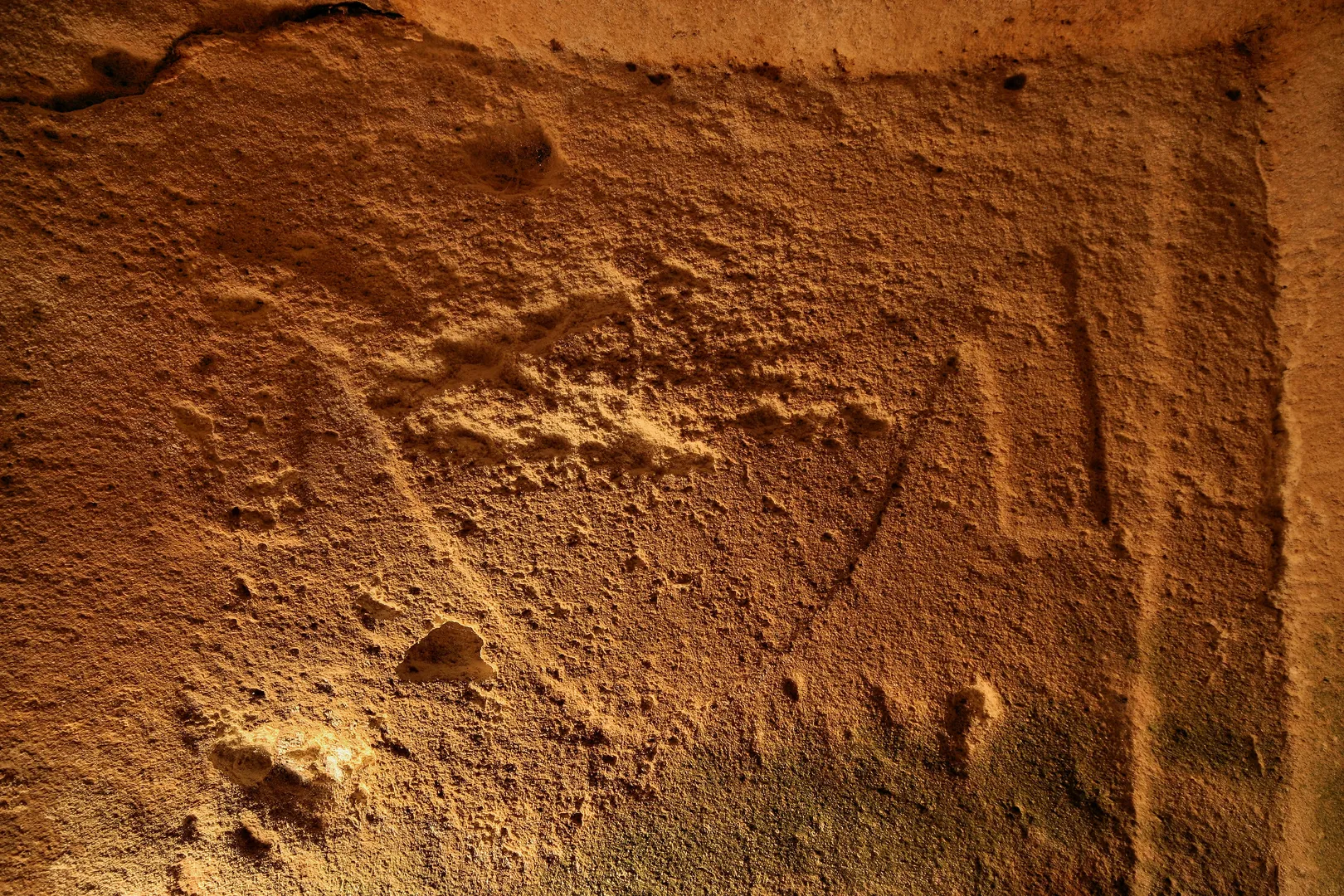
Necropolis of Mesu 'e Montes
Eighteen domus de janas carved into the rock at the foot of Monte Mamas, rich in symbols and ancient funeral rituals.

Sanctuary of Monte d'Accoddi
A unique monument in Europe, built between the 4th and 3rd millennium BC, a place of worship and rituals from Sardinia's prehistoric era
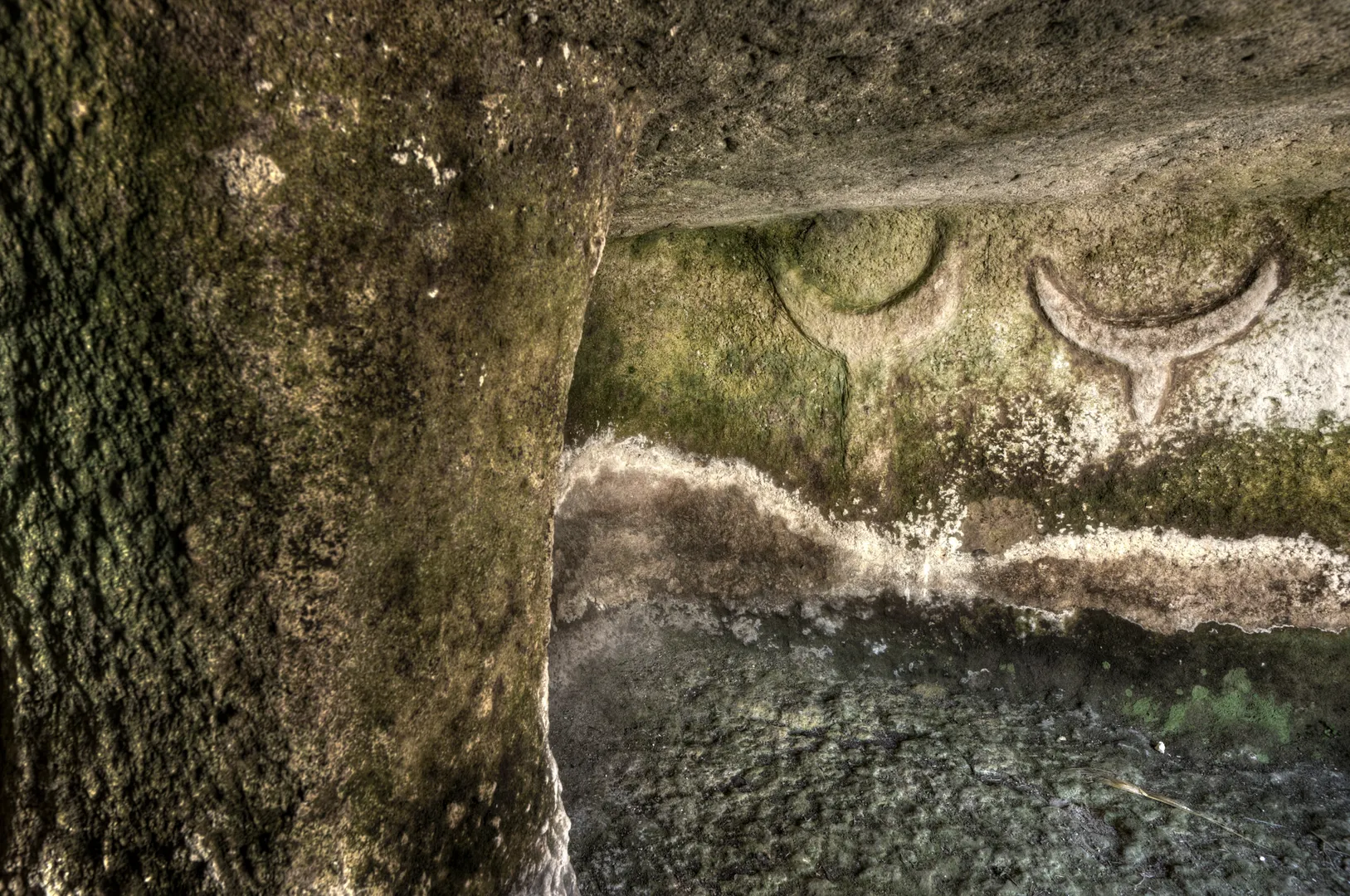
Necropolis of Su Crucifissu Mannu
One of the largest necropolises in northern Sardinia, with domus de janas adorned with symbols related to the cult of the dead.

Domus de janas of Orto del Beneficio parrocchiale
Two domus de janas carved into the limestone rock, testimony of Neolithic funeral rituals in the heart of the town of Sennori.
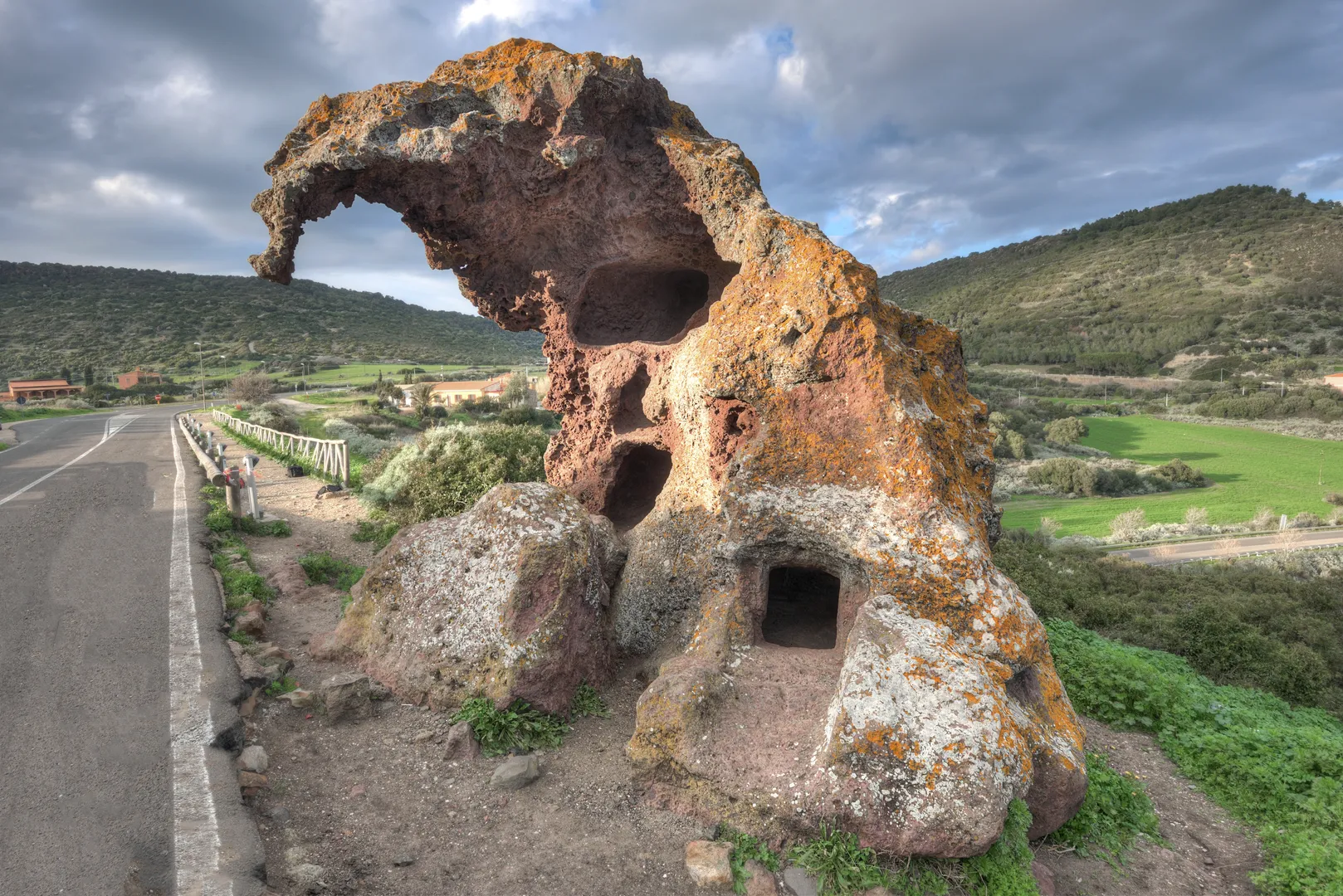
Domus de Janas of Roccia dell'Elefante
Famous for its natural shape resembling an elephant, the rock hosts two domus de janas carved into the volcanic stone.
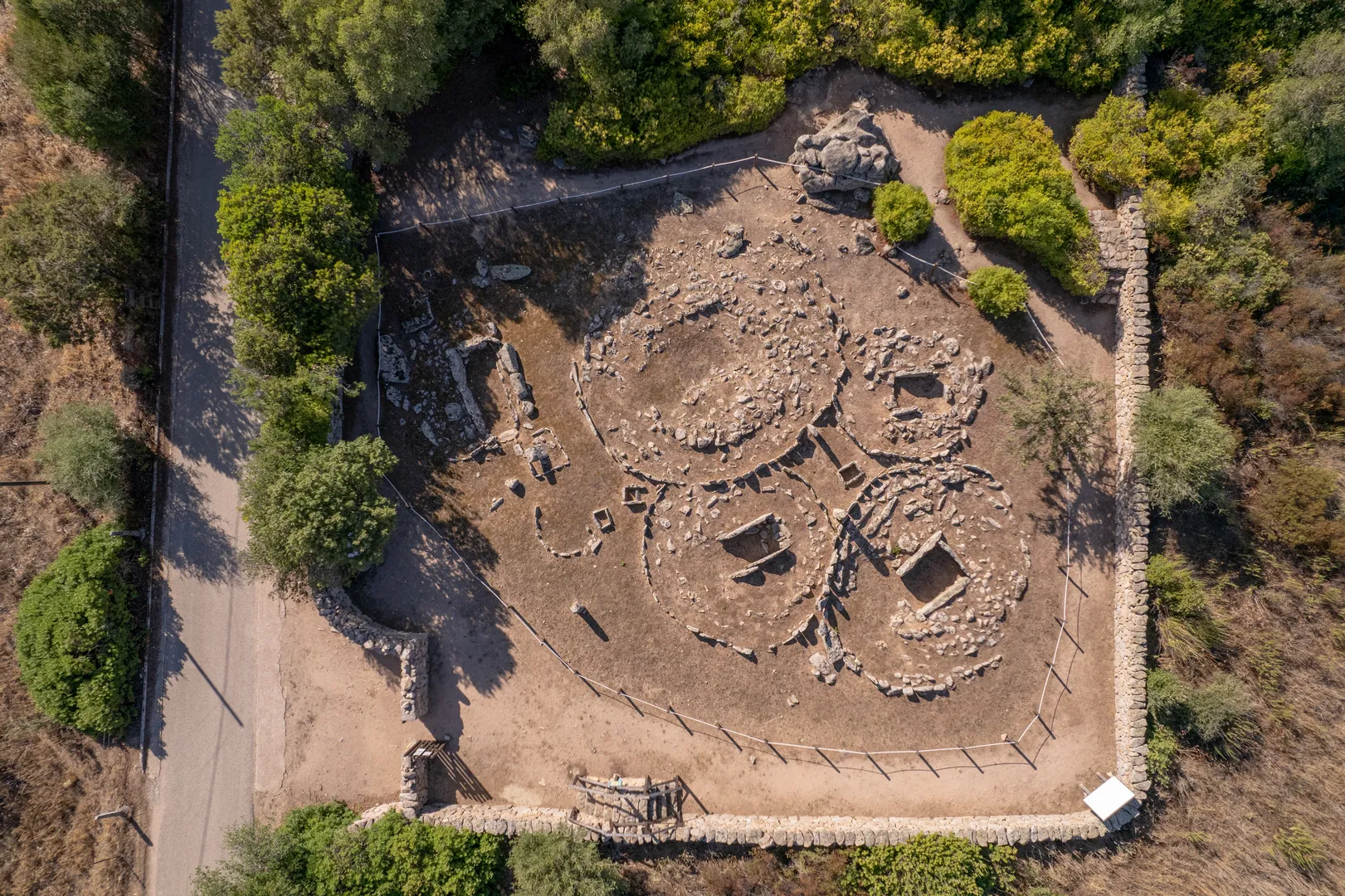
Necropolis of Li Muri
A complex of megalithic funeral circles dating back to the 5th millennium BC, a unique feature in Sardinian archaeology.
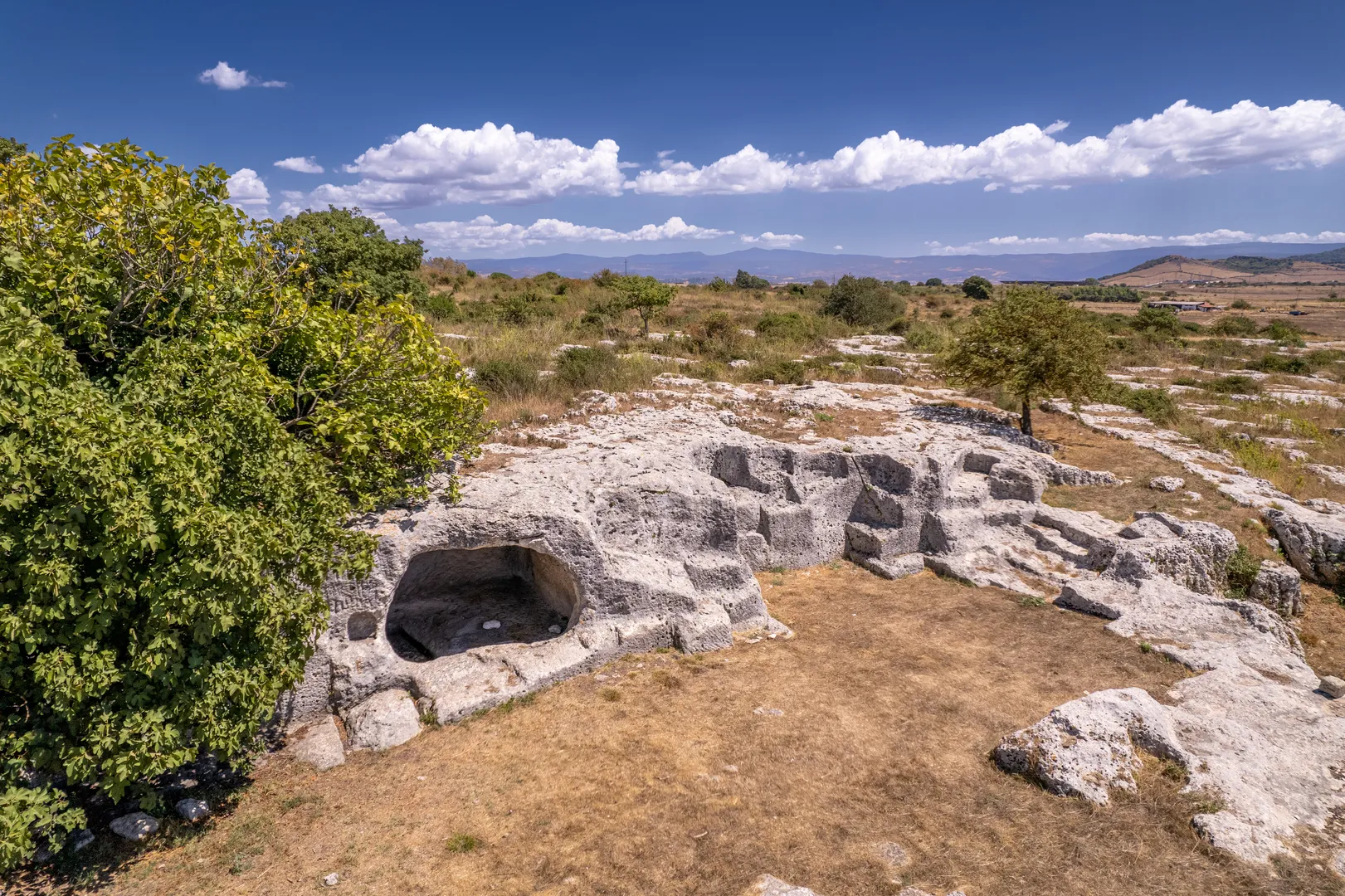
Petroglyph Park
An open-air museum with rock carvings depicting symbols and scenes of prehistoric daily life.

Dolmen of Sa Coveccada
The most imposing dolmen in Sardinia, used as a collective tomb during the Neolithic.
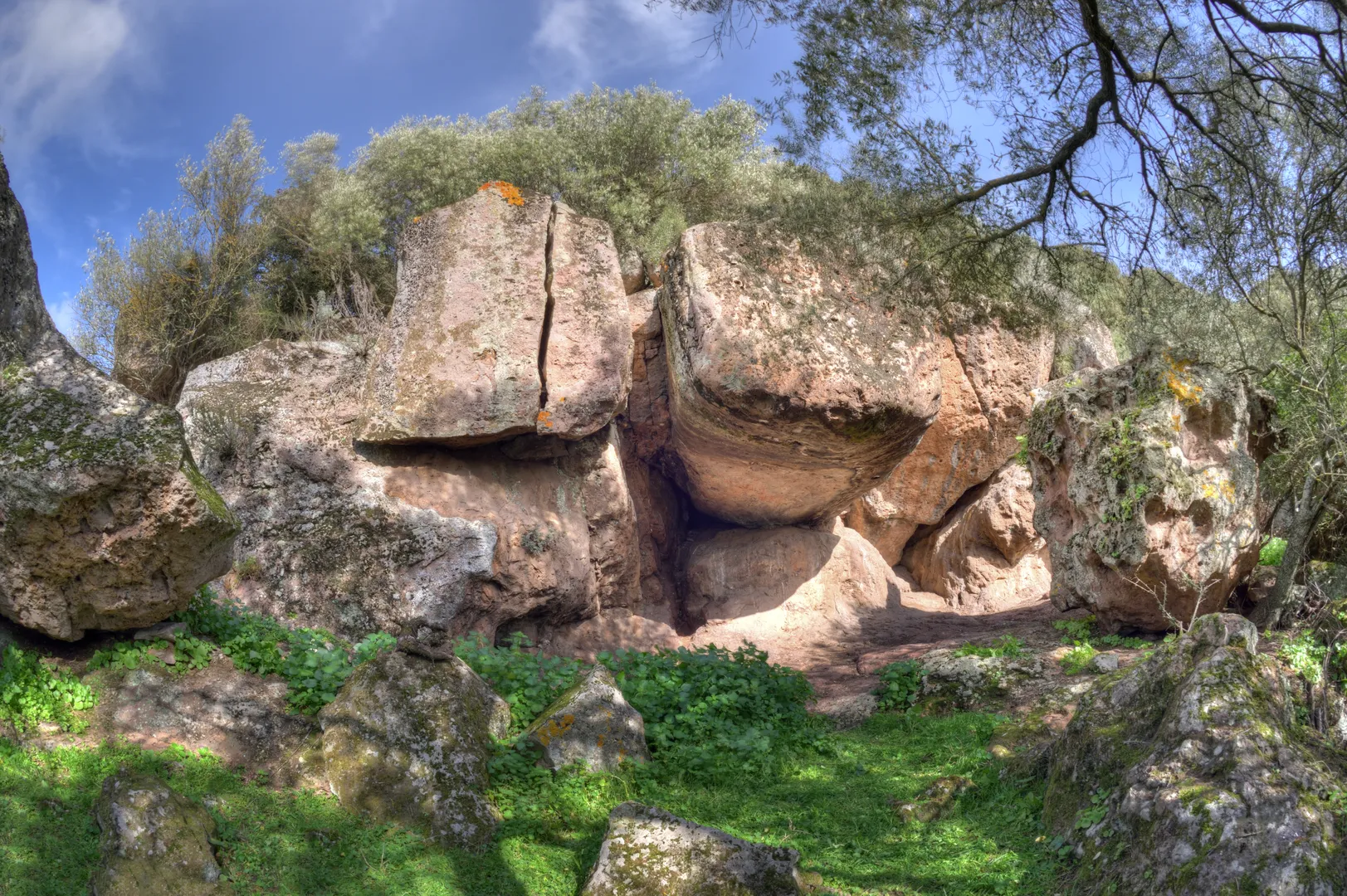
Shelter of Luzzanas
A natural cavity used as a shelter and place of worship during the Neolithic period, enriched with rock paintings and evidence of prehistoric life.
-necropoli-di-Sant_-Andrea-Priu.CepOTTcP_Z7VHCf.webp)
Necropolis of Sant'Andrea Priu
One of the most monumental necropolises in Sardinia, with large domus de janas and richly decorated interiors.
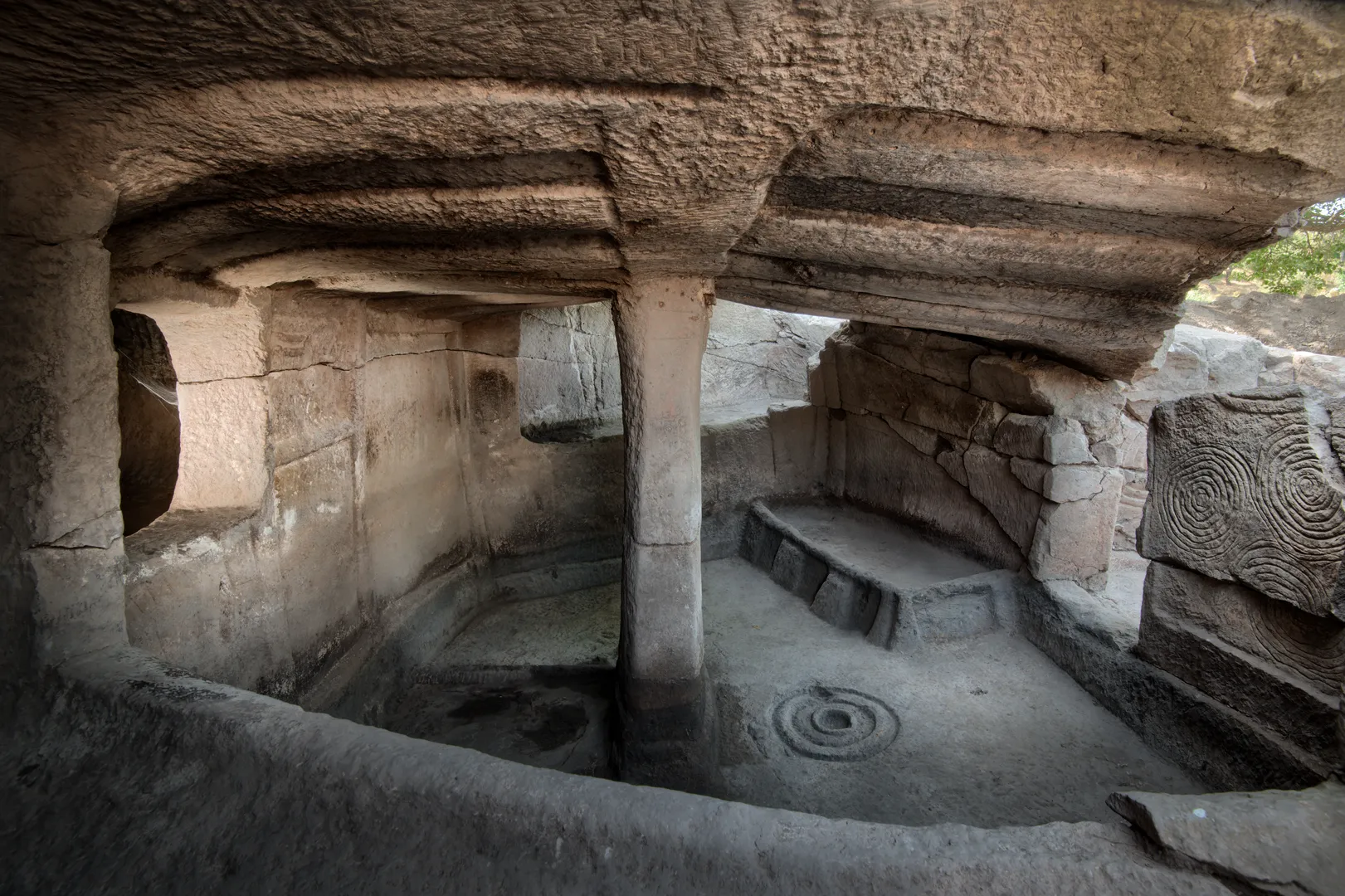
Necropolis of Sa Pala Larga
Large funerary chambers carved into the basalt rock, with traces of wall paintings and symbolic carvings.
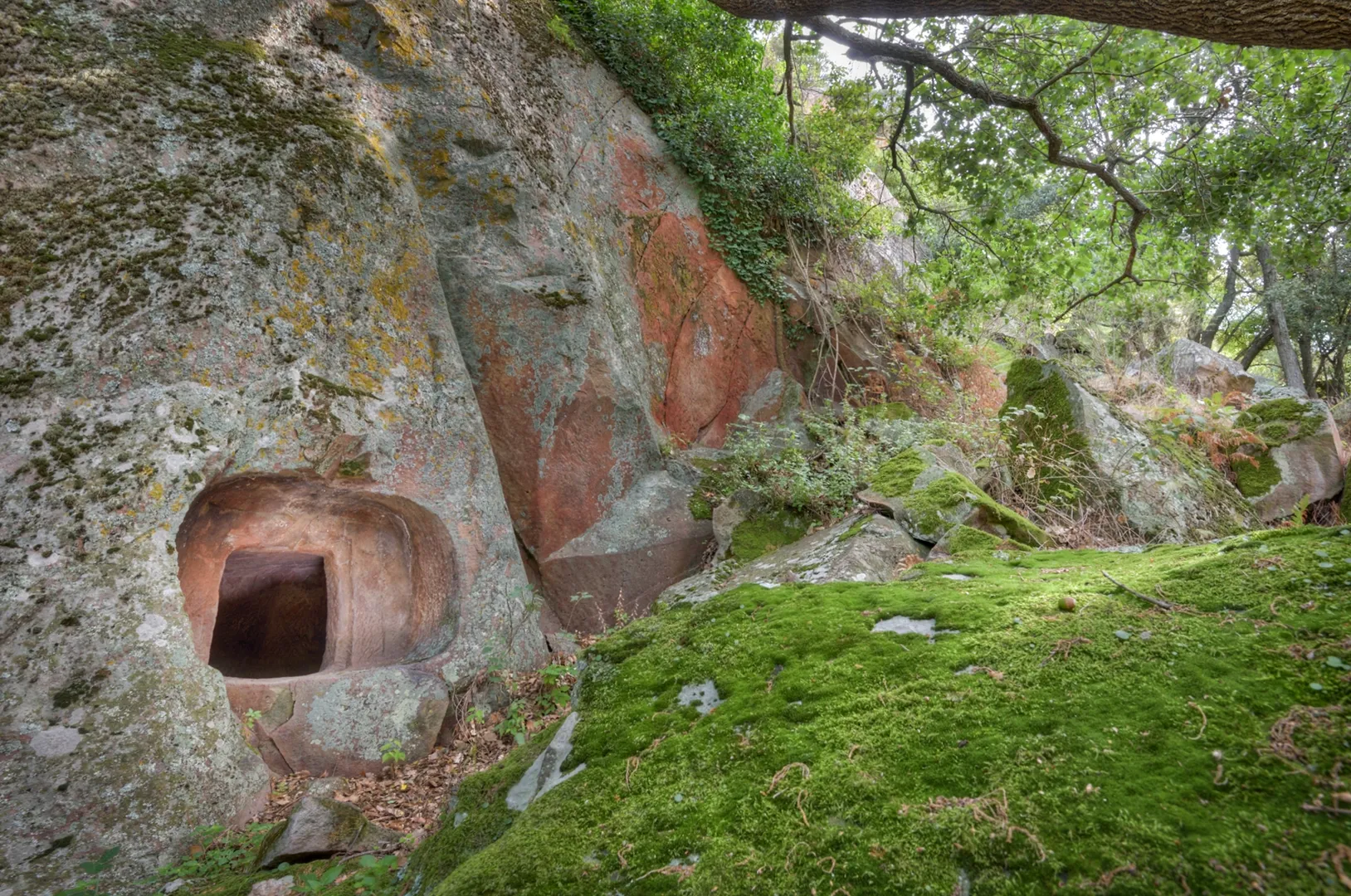
Necropolis of Sos Furrighesos
Seven domus de janas adorned with rock carvings, immersed in the woods of Anela, witnesses of ancient funeral cults.
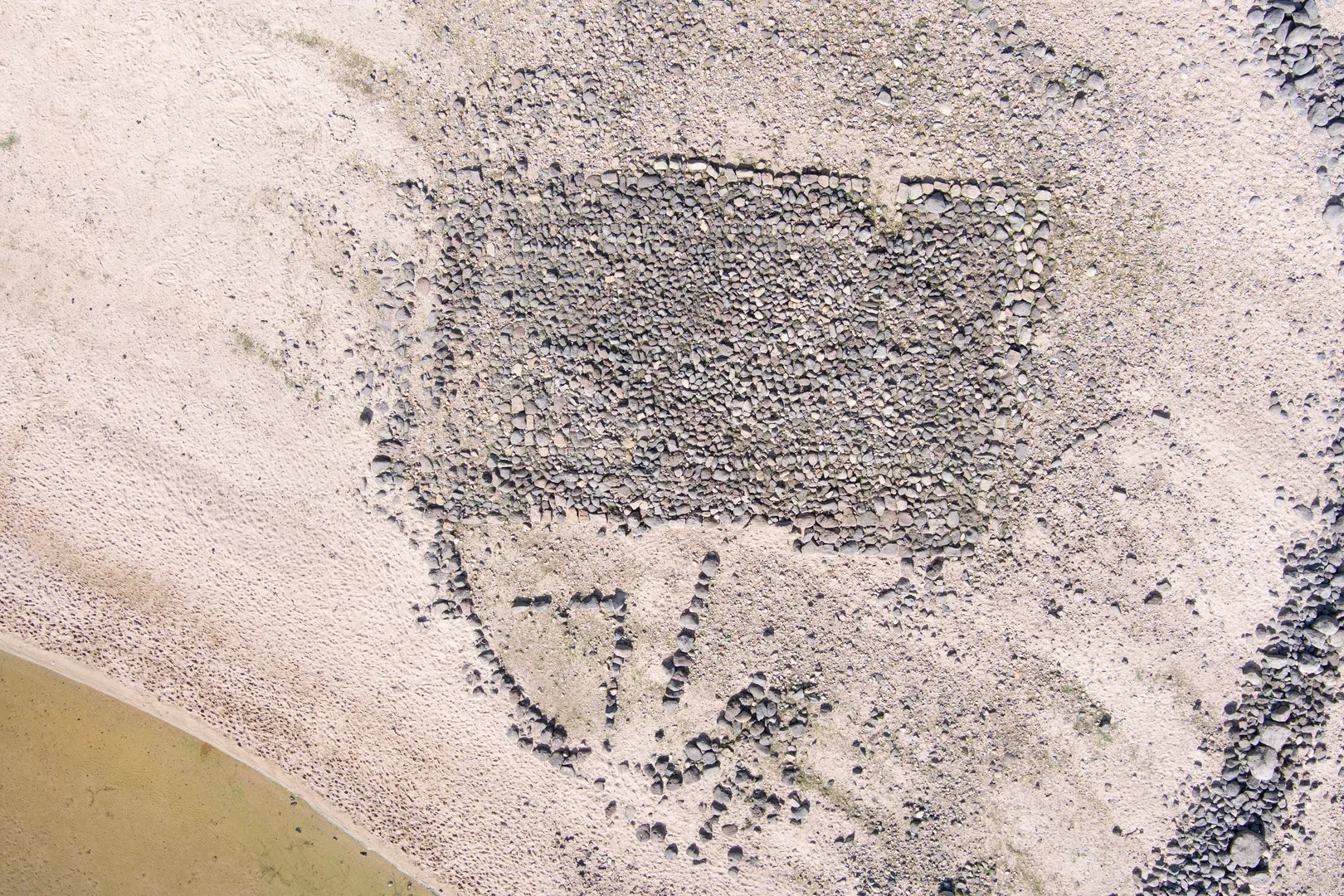
Village of Serra Linta
A prehistoric settlement with remains of huts, enclosures, and traces of agricultural activities, testimony of daily life in the Neolithic.
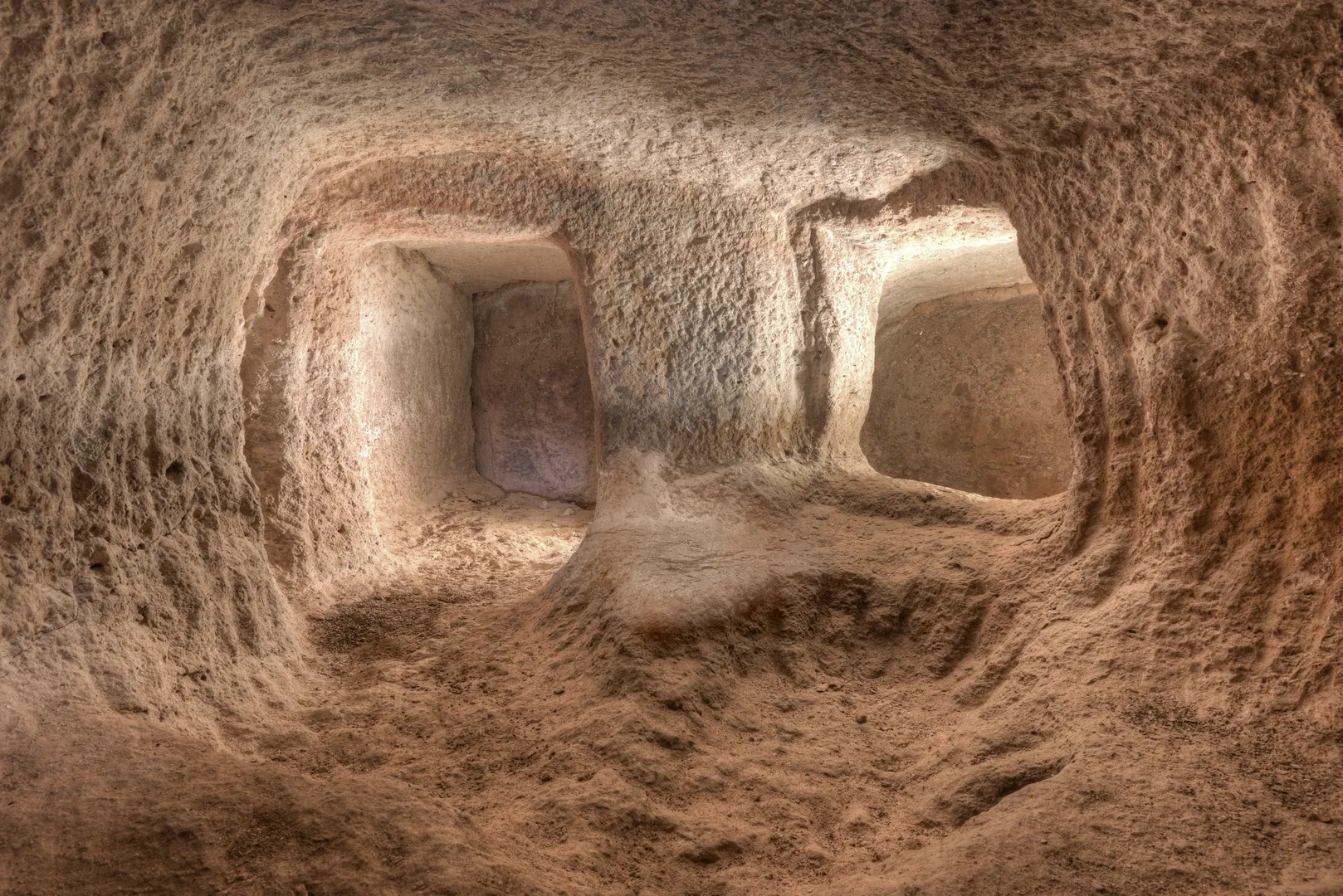
Necropolis of Ispiluncas
Hypogeic tombs carved into the limestone rock with symbolic decorations, witnesses of the spirituality of pre-Nuragic communities.
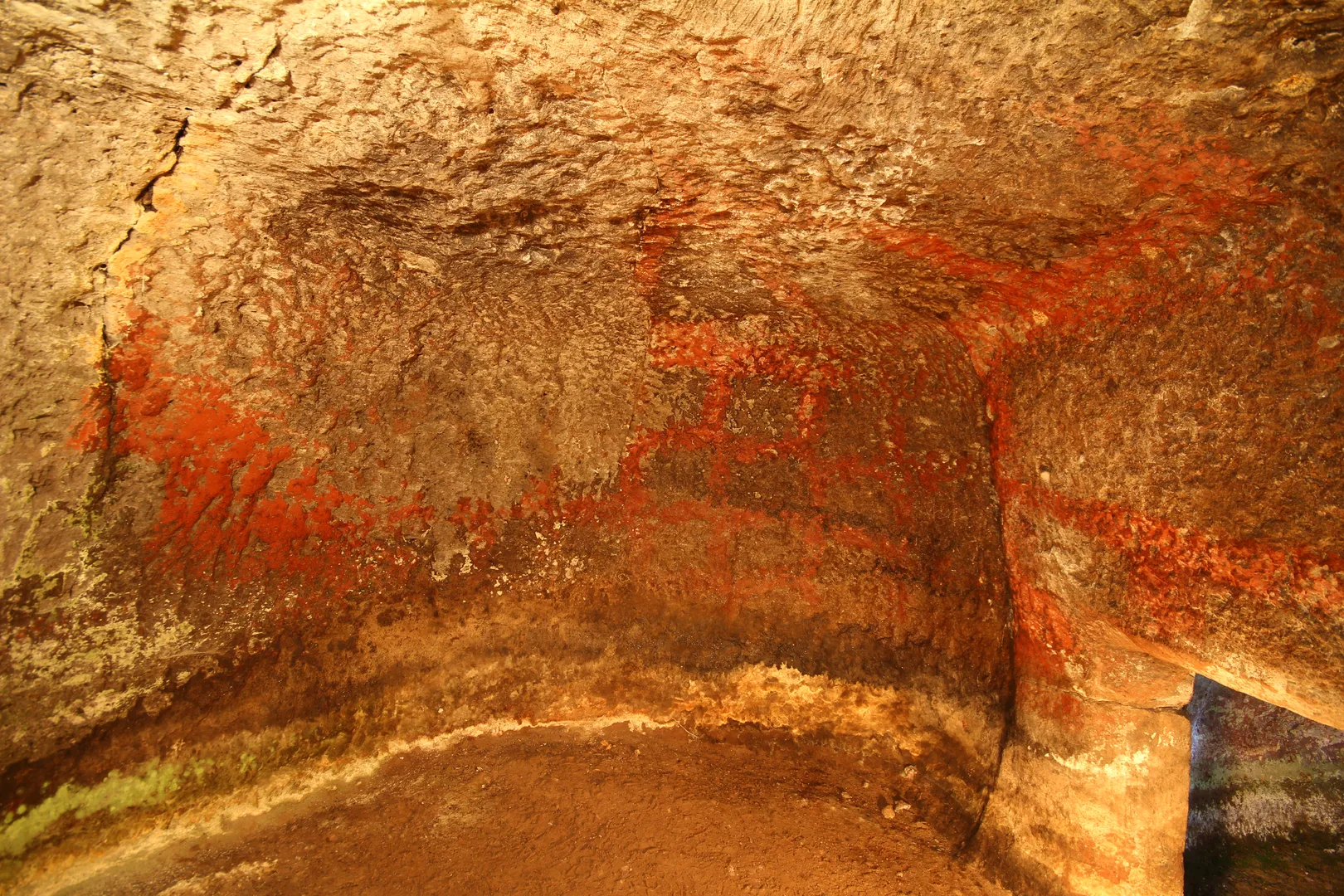
Necropolis of Mandras or Mrandas
Hypogeic tombs carved into the rock during the Neolithic, with funerary chambers that testify to ancient collective rituals.
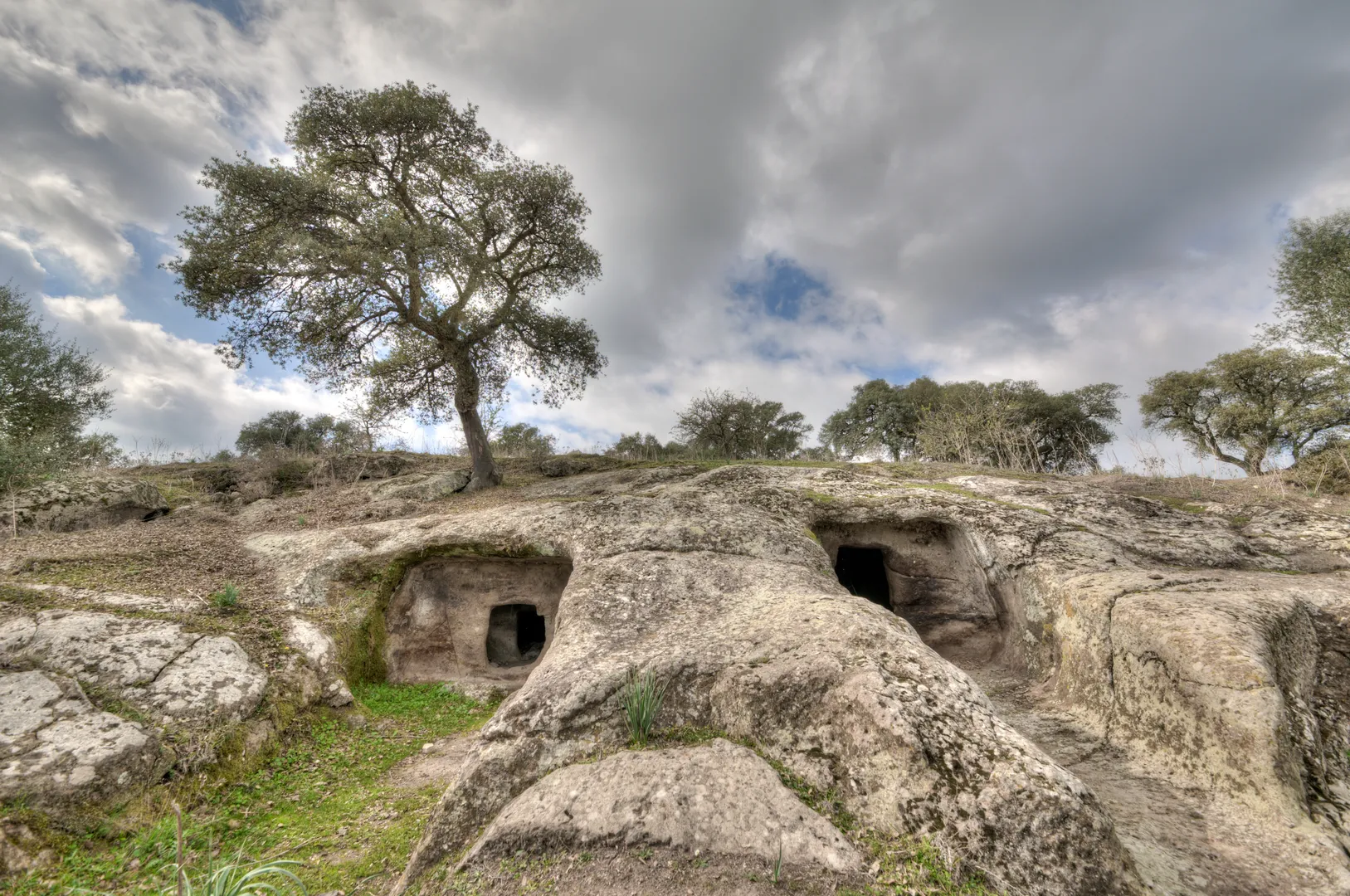
Necropolis of Brodu
Pre-Nuragic funerary complex with domus de janas used as collective burials during the Neolithic.
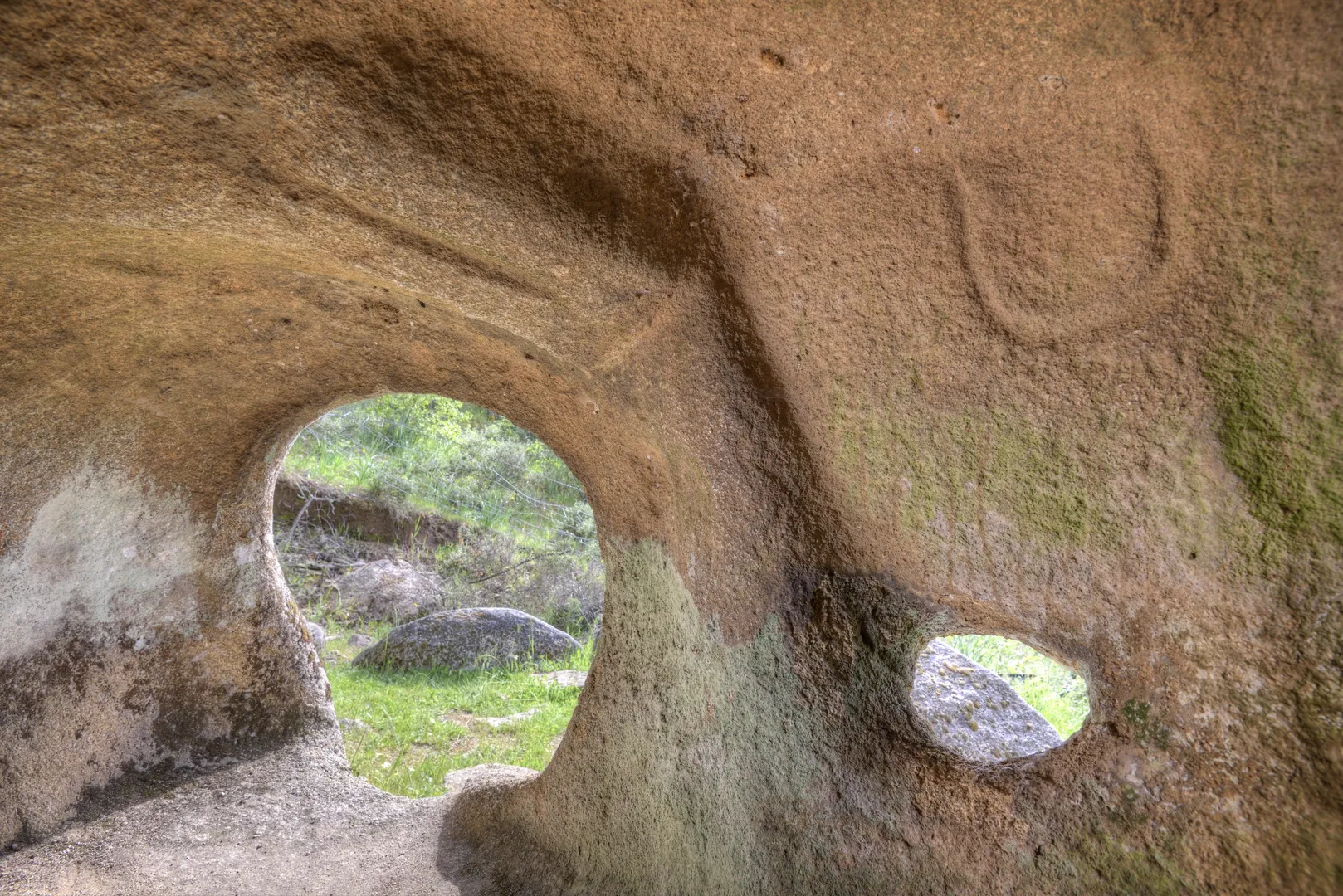
Necropolis of Istevéne
Hypogeic tombs with symbolic decorations carved into the rock, linked to pre-Nuragic funeral cults.

Grotta Corbeddu
One of the oldest testimonies of human presence in Sardinia, with artifacts dating back to the Paleolithic.
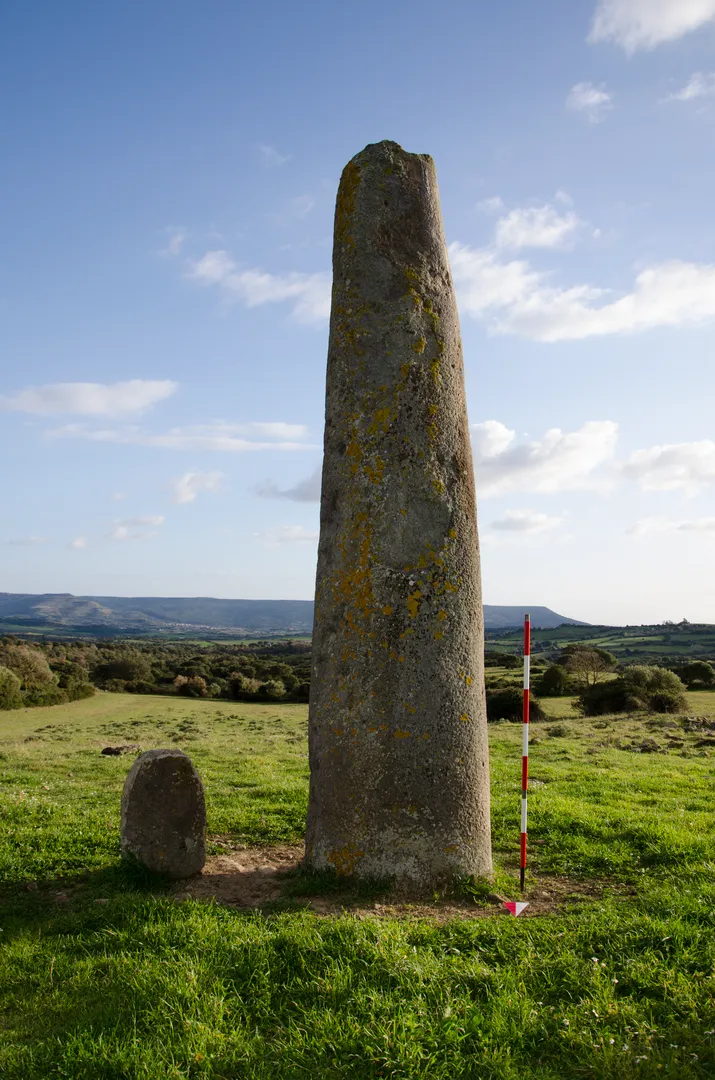
Menhir of Monte Corru Tundu
A prehistoric monolith erected vertically, symbol of ancient religious cults and ritual practices.
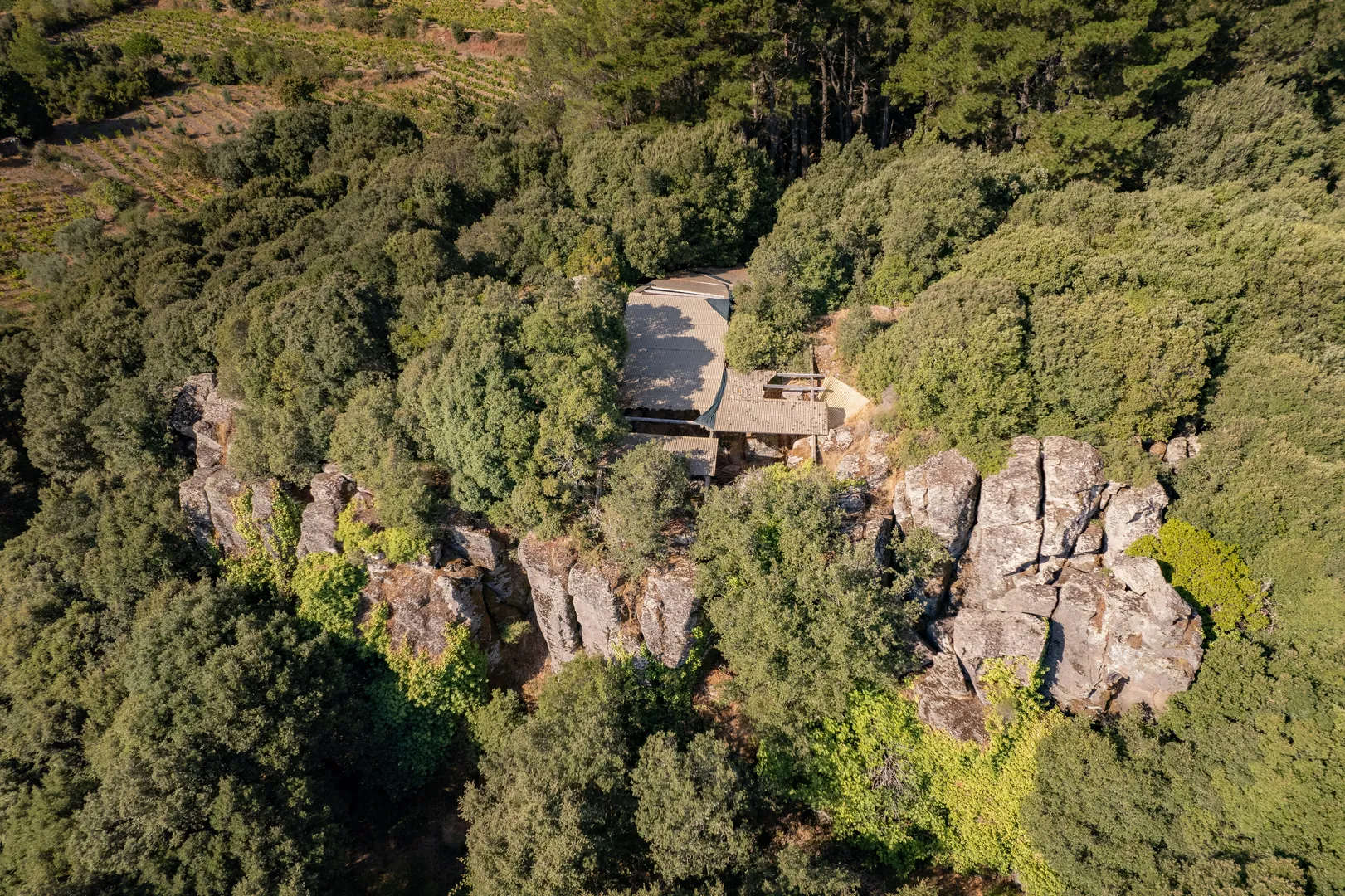
Shelter of Su Forru de is Sinzurreddus and the stone tool workshops of Sennixeddu
Stone working monuments dating back to the Neolithic, with traces of craft activities and natural shelters.

Archaeological Park of Pranu Mutteddu
One of the largest megalithic complexes in Sardinia, with aligned menhirs and prehistoric tombs immersed in the Mediterranean scrub.
-Montessu-T.-delle-Spirali-30-(AC).DI4hRKlX_Z21Xwbk.webp)
Necropolis of Montessu
One of the largest necropolises in Sardinia, with domus de janas carved into the rock and symbolic decorations related to funeral cults.
Prehistoric Sardinia in the Media
Prehistoric Sardinia comes to life in the media. TV reports, documentaries, interviews, and articles showcase the island's heritage with images, voices, and stories that speak to a wide audience. A journey through culture, emotion, and memory.
News from the Past, Experiences in the Present
History is not just in books or ancient stones: it is something to live, explore, and rediscover every day. In this section, you will find events, exhibitions, and initiatives related to the prehistory of Sardinia and the UNESCO candidacy.
From conferences to public excavations, from reenactments to educational workshops: every event is an opportunity to immerse yourself in a past that continues to speak to us.






